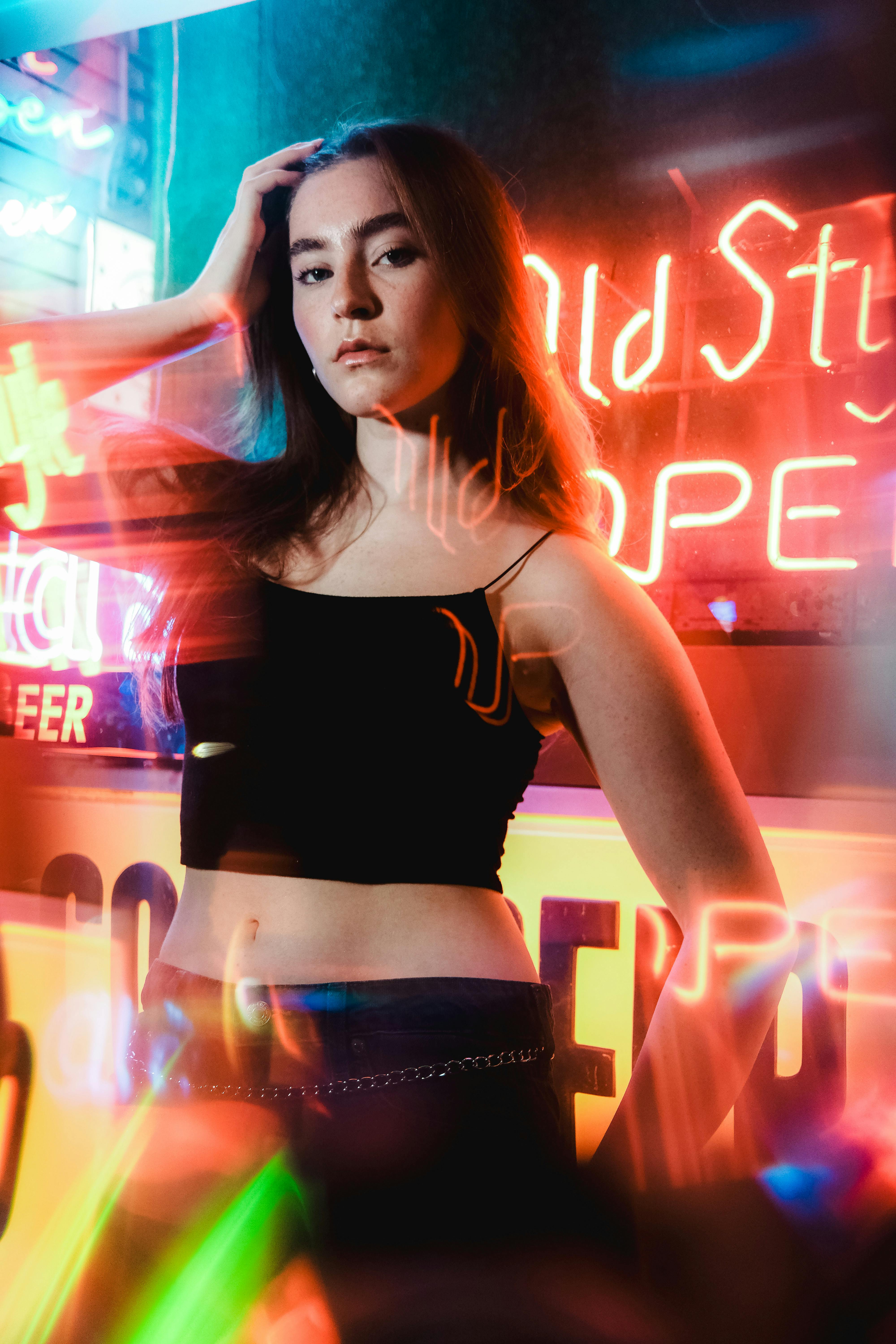Have you ever considered how LED lighting can transform architectural spaces? Discover how advanced LED lighting design is revolutionizing the way we experience buildings and interiors. From energy efficiency to creative design possibilities, LED lighting is changing the game in the architecture industry.

This image is property of images.pexels.com.
Understanding LED Lighting Technology
LED stands for Light Emitting Diode, a semiconductor device that emits light when an electrical current passes through it. Unlike traditional incandescent bulbs, LEDs are more efficient, durable, and versatile. They come in various shapes, sizes, and colors, making them ideal for a wide range of lighting applications. Understanding the technology behind LED lighting is crucial to appreciate its impact on architectural spaces.
Energy Efficiency
LED lighting is known for its energy efficiency, using up to 80% less energy than traditional incandescent bulbs. This makes them not only environmentally friendly but also cost-effective in the long run. By switching to LED lighting, you can significantly reduce energy consumption and lower electricity bills for both residential and commercial spaces.
Durability and Longevity
LED lights are incredibly durable and long-lasting, with an average lifespan of up to 50,000 hours or more. Unlike incandescent bulbs that burn out quickly, LEDs can withstand frequent switching on and off without affecting their lifespan. This durability makes them ideal for architectural spaces where lighting is required for extended periods.
Benefits of Advanced LED Lighting Design
Advanced LED lighting design goes beyond basic illumination, offering a wide range of benefits for architectural spaces. From dynamic color options to smart control systems, advanced LED lighting design can transform the look and feel of any environment. Let’s explore some of the key benefits of incorporating advanced LED lighting design into architectural projects.
Creative Design Possibilities
One of the most significant advantages of advanced LED lighting design is the endless creative possibilities it offers. LEDs can be customized to create unique lighting effects, such as color-changing lights, dimmable options, and programmable patterns. Designers can use LEDs to enhance architectural features, create mood lighting, or evoke a specific ambiance within a space.
Improved Lighting Quality
LED lighting provides superior quality of light compared to traditional lighting sources. LEDs produce bright, clear, and uniform light that can enhance visibility and reduce eye strain. With advanced LED lighting design, you can achieve precise control over light distribution, color temperature, and intensity, allowing for optimal lighting conditions in any architectural setting.
Energy Efficiency and Cost Savings
In addition to their energy-efficient nature, advanced LED lighting designs offer enhanced control over energy consumption. Smart LED systems can be integrated with sensors, timers, and dimmers to adjust lighting levels based on occupancy, natural light, or time of day. This not only reduces energy waste but also contributes to significant cost savings in the long term.
Sustainability and Environmentally Friendly
LED lighting is a sustainable lighting solution that aligns with green building practices and environmental standards. LEDs are free of toxic materials like mercury and lead, making them safe to use and dispose of. By reducing energy consumption and carbon emissions, advanced LED lighting design helps minimize the environmental impact of architectural spaces.
Applications of Advanced LED Lighting Design in Architecture
Advanced LED lighting design is a versatile and flexible lighting solution that can be applied to various architectural projects. From commercial buildings to residential homes, LED lighting can enhance aesthetics, improve functionality, and create unique experiences for occupants. Let’s explore some common applications of advanced LED lighting design in architecture.
Interior Lighting
Interior lighting plays a crucial role in defining the atmosphere and functionality of indoor spaces. Advanced LED lighting design can be used to illuminate different areas within a building, such as offices, retail stores, restaurants, and residential interiors. LEDs can create focal points, accentuate architectural details, and establish various lighting scenes to cater to different activities and moods.
Exterior Lighting
Exterior lighting is essential for enhancing the curb appeal, safety, and security of architectural structures. Advanced LED lighting design can be used to illuminate building facades, pathways, landscapes, and outdoor amenities. LEDs can provide visual interest, highlight architectural elements, and improve nighttime visibility, creating a welcoming and inviting exterior environment.
Decorative Lighting
Decorative lighting adds a touch of elegance and personality to architectural spaces. Advanced LED lighting design offers a wide range of decorative options, such as pendant lights, chandeliers, wall sconces, and strip lights. LEDs can be used to create custom lighting fixtures, art installations, and ambient lighting displays that enhance the aesthetic appeal of any interior or exterior space.
Dynamic Lighting
Dynamic lighting involves the use of color-changing LEDs to create dynamic and interactive lighting effects. Advanced LED lighting design allows designers to program custom color sequences, motion patterns, and mood lighting scenarios. Dynamic lighting can be used in entertainment venues, event spaces, hospitality environments, and public art installations to engage users and create immersive experiences.
Architectural Integration
LED lighting can be seamlessly integrated into architectural elements to enhance their visual impact and functionality. Advanced LED lighting design allows for discreet placement of LEDs within walls, ceilings, floors, and furniture to create a cohesive and integrated lighting scheme. Architectural integration of LEDs can highlight textures, materials, and spatial volumes, blurring the lines between lighting and architecture.
Considerations for Implementing Advanced LED Lighting Design
When incorporating advanced LED lighting design into architectural projects, several factors need to be considered to ensure optimal performance and functionality. From lighting requirements to technical specifications, careful planning and coordination are essential to achieve the desired lighting outcome. Let’s explore some key considerations for implementing advanced LED lighting design in architectural spaces.
Lighting Design Requirements
Before selecting LED lighting fixtures, it is crucial to define the lighting design requirements based on the architectural program and user needs. Consider factors such as lighting levels, color rendering, light distribution, glare control, and energy efficiency when designing the lighting scheme. Understanding the specific lighting requirements will help determine the type and placement of LEDs to achieve the desired lighting effect.
Technical Specifications
LED lighting fixtures come in various shapes, sizes, wattages, and color temperatures, each serving different lighting applications. Pay attention to the technical specifications of LEDs, such as lumen output, efficacy, CRI (Color Rendering Index), beam angle, and dimming capabilities. Select LEDs that meet the project’s technical requirements and design intent to ensure optimal performance and compatibility with the lighting control system.
Lighting Control Systems
Advanced LED lighting design often involves sophisticated lighting control systems that allow for remote management and customization of lighting settings. Consider integrating smart controls, sensors, timers, and dimmers into the lighting design to enhance user comfort, energy savings, and operational efficiency. Lighting control systems can be programmed to adjust lighting levels, color temperature, and ambiance to suit different activities and time of day.
Maintenance and Serviceability
LED lighting fixtures require minimal maintenance compared to traditional lighting technologies. However, it is essential to consider the serviceability and accessibility of LEDs for maintenance purposes. Select fixtures with easy-to-replace components, modular designs, and long-term warranties to ensure hassle-free maintenance and repair. Regular cleaning and inspection of LEDs will help prolong their lifespan and maintain optimal performance over time.
Budget and Cost Considerations
While LED lighting offers long-term cost savings and energy efficiency benefits, the initial investment in advanced LED lighting design can vary depending on the project scale and complexity. Develop a lighting budget that includes costs for LED fixtures, lighting controls, installation, programming, and maintenance. Consider the return on investment (ROI) of LED lighting in terms of energy savings, operational costs, and user satisfaction to justify the upfront expenses.

This image is property of images.pexels.com.
Conclusion
In conclusion, advanced LED lighting design is revolutionizing architectural spaces by offering energy-efficient, durable, and versatile lighting solutions. From creative design possibilities to smart control systems, LEDs are transforming the way we illuminate and experience buildings and interiors. By understanding the technology and benefits of advanced LED lighting design, architects, designers, and building owners can create unique, sustainable, and visually engaging environments that enhance the quality of life for occupants. Embrace the power of LEDs to illuminate the future of architecture and design.